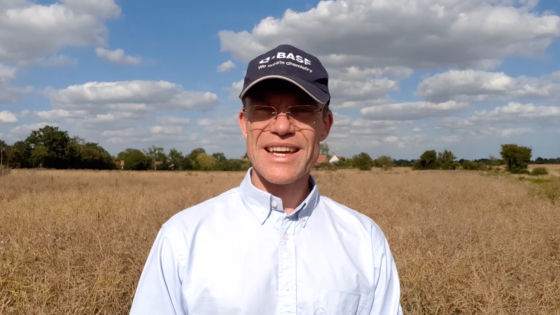“Know The Bentazone Risk” - Water Stewardship
Updated: July 2021
Environment Agency data shows that bentazone (the herbicide active substance in Basagran® SG and other products) is the most frequently detected approved pesticide in UK groundwater and is also increasingly being found in surface water. Due to the link between EU legislation on pesticides and water, it is possible that the approval for bentazone will not be renewed, resulting in the loss of all bentazone products.
Three industry leading manufacturers have formed a new partnership to help safeguard the future of the post-emergence herbicide to help maintain the approval beyond 2025. BASF, Nufarm and Sharda Cropchem have formed the “Know the Bentazone Risk” initiative which is aimed at promoting sustainable on-farm water stewardship through marketing, events, on-farm engagement, and the development of management tools.
“Know The Bentazone Risk” water stewardship programme is a proactive initiative aimed at encouraging responsible product use. Advice was updated for 2017 (and further reviewed in 2019 and 2021) to also include recommendations for surface water in addition to groundwater High Risk Areas (Drinking Water Groundwater Safeguard Zones for bentazone (DWGwSgZ) or nitrates and Groundwater Source Protection Zones 1+2 (GwSPZ)).
Bentazone is prone to leaching into groundwater. Do not apply to shallow sands or gravel soils lacking in organic or clay content in high risk areas such as Drinking Water Groundwater Safeguard Zones for bentazone, and ground water source protection zones 1+2 , or to waterlogged soils. Do not spray when heavy rain is likely within the next 7 days.
Identification of the high risk areas has taken a big step forward with the campaigns north_east new Mapping and Planning Tool.
The new tool allows users to identify the level of risk in seconds and represents a big step forward in useability from the Environment Agency’s website ' north_east Check Zones ' for DWGwSgZ & Natural England ' north_east Magic Map ' for GwSPZ.
The “Know The Bentazone Risk” campaign asks growers and advisors to consider these updated recommendations and use the north_east new Mapping and Planning Tool.
Know The Bentazone Risk
Top Tips
Useful Links
- download BASF's Bentazone VI Advice Sheet (updated April 2019)
- download BASF's recommendation use of Bentazone products (updated April 2019)
- north_east Voluntary Initiative website
- download Guide to Drinking Water Safeguard Zones
- download Groundwater Source Protection Zones
- download High Risk Mapping and Planning Tool




